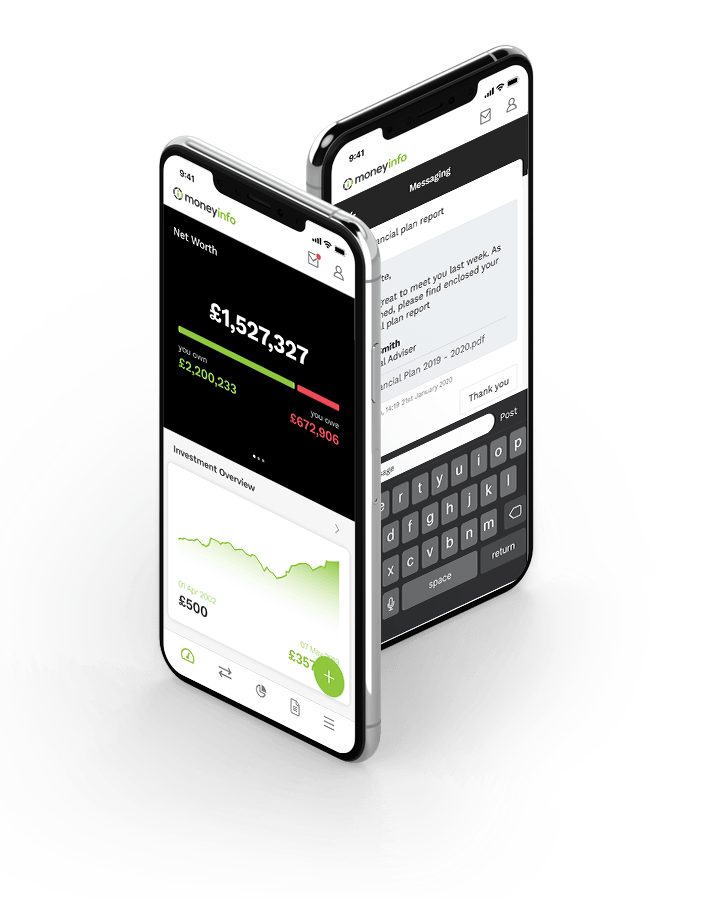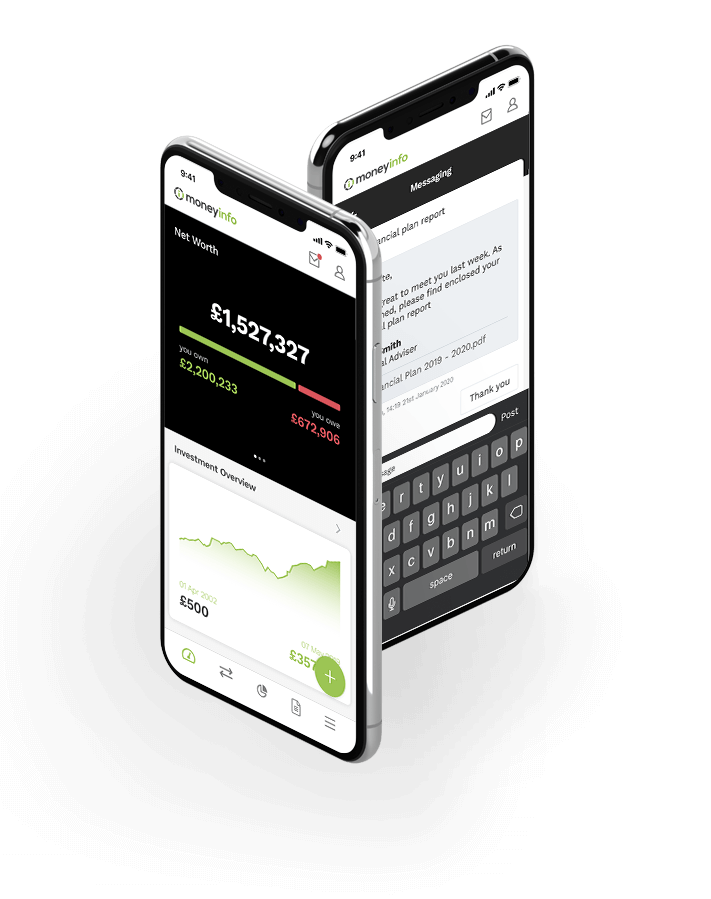Why advisers use account aggregation
Many advisers build comprehensive portfolios, plans and forecasts for the clients to ensure they will reach their future goals. However many advisers lack the accurate information they need, rely on guesswork from their clients or find it time consuming to determine information like income and expenditure.
Account aggregation can be one of the easiest and fastest ways for advisers to demonstrate value to new prospects and existing clients.
Account aggregation should:
- Deliver a new factfind experience
Remove the guesswork and paper forms for advisers and clients in establishing a true financial picture. Typical discovery meetings result in clients doing huge amounts of work before they see any value from their adviser. Account aggregation client portals like moneyinfo take this pain away by securely linking to a client’s online personal finance and investment accounts and bringing the required information into a single screen.
- Deliver better advice
Advisers need to know how non managed accounts are performing in order for them to determine whether the client is taking the appropriate risk, is not being over charged or sitting in underperforming funds.
- Accelerate assets under advice
Greater and easier insight on the client’s total wallet allows advisers to determine what can be better managed in-house.
- Allow advisers to manage the whole picture
Having access to what your clients own, owe, spend and earn and seeing how each account relates to another allows an adviser to leverage that knowledge to deliver comprehensive financial planning advice.
- Streamline communications
If clients can access their financial information securely in one place, they would expect to see the associated correspondence (contract notes, suitability letters, wills etc) in the same place too. Account aggregation services should aggregate the associated paperwork as well as the financial data.
- Meet client expectations
They expect their advisers to give them a 360-degree view of all of their finances, assets and liabilities in one place. They want one place to go where they can login and see everything. They come to you to make their life easier and expect this convenience.

